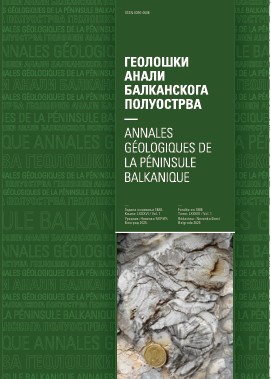Vertical mineralization interval and forecast of the position of an ore-body in the Alšar Sb-As-Tl deposit, FYR Macedonia
Abstract
Establishing a vertical interval of mineralization is a complex geological task based on the knowledge of many parameters and quantities that describe the genesis of an ore deposit. It is particularly important to know the time and the primary depth of the formation of an ore-body and its recent position. The establishment of the vertical mineralization interval is considered in this work on the example of the Alšar Sb-As-Tl mineral deposit. The research methods used were geomorphological analysis (the principal exploration method), measurement of cosmogenic radioactive (10Be, 26Al) and stable (3He, 21Ne) nuclides to determine the erosion velocity (control method) and comparison of the obtained results with the geological exploration data from operative mine workings. A detailed geological study of the formation of the Alšar deposit preceded the research. The research data are the following: depth interval of the ore-body is 10-50 m below the present ground surface; average level of erosion in the Alšar deposit area is 20-80 m over a period of 106 years (Ma), or about 100-400 m from the beginning of the volcanic activity to the present day (≈5 Ma); thickness of the eroded rock complex over the ore bodies from the beginning of the hydrothermal alteration and the formation of ore bodies (4.31 Ma) to the present is ≥150 m (Crven dol), or ≥230 m (central deposit); the palaeointerval of the formation of the ore-body is 230 m (200-430 m); and, finally, the potentially mineralized interval is deep, from 10 m to 280 m below the surface.
Copyright (c) 2011 Geološki anali Balkanskoga poluostrva

This work is licensed under a Creative Commons Attribution 4.0 International License.










